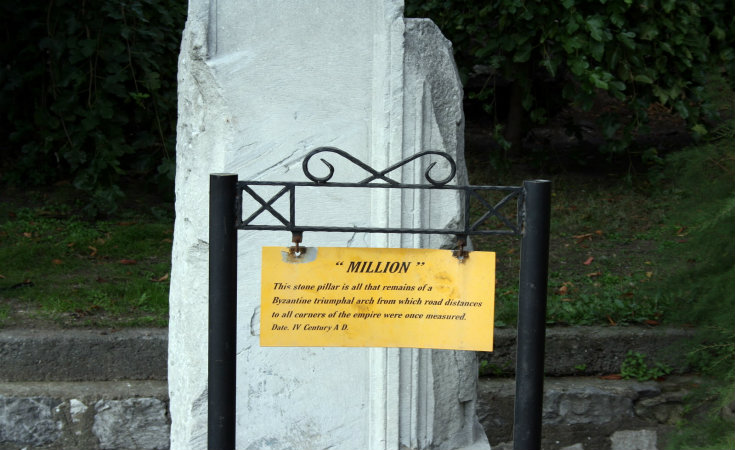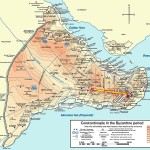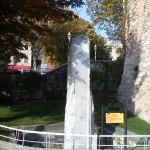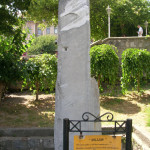The Million Pillar (Turkish: Milyon Taşı), originally named “Milion” in Greek, is found near to the entrance of the Yerebatan Cistern and was used as a marker for the starting point of all roads leaving Constantinople during the Byzantine period. The Million Stone had the same function as the Milarium Aureum in Rome, to indicate the distance to other important cities from the capital. Built by Emperor Constantine I in the 4th Century, it was first constructed as a dome placed on four columns. However the structure was damaged during attempts to make the vault wider in the 16th century and the stone fell from its original place.
The most crowded street of old Constantinople was referred to as Mese (Middle Street in ancient Greek). And Mese started at the Milion Pillar and continued westwards passing by Hippodrome and reached 600 meters upto Forum of Constantine (today’s Cemberlitas), from there, the Mese Street continued to the square of Forum Theodosius (today’s Beyazit).
All roads in Asia Minor were considered to begin from this monument and all distances in the Roman Empire were measured relative to that point.There was a list of all the major cities in the empire and distances to them, inscripted on this Million Pillar.
The famous proverb ‘all roads lead to Rome’ comes from this concept.
Before leading to Rome, “all roads were leading to Constanstinople in Asia”
























